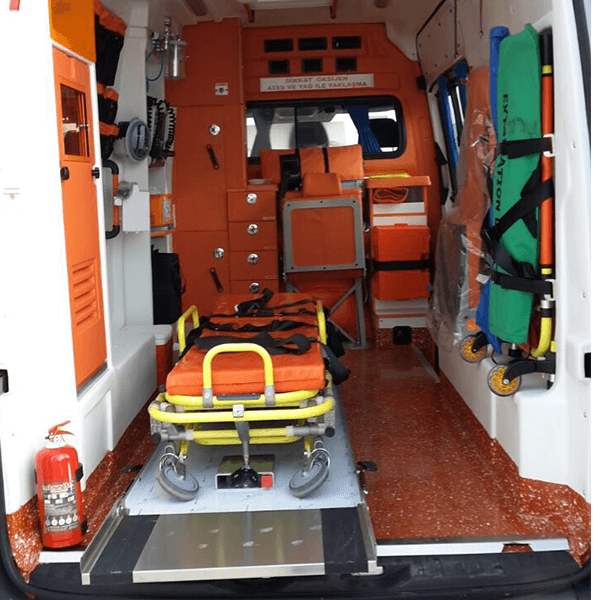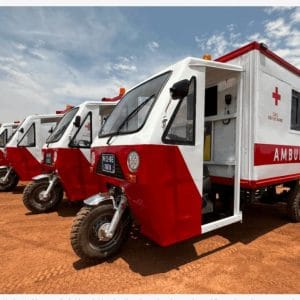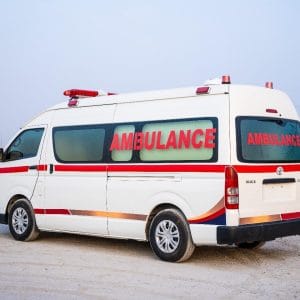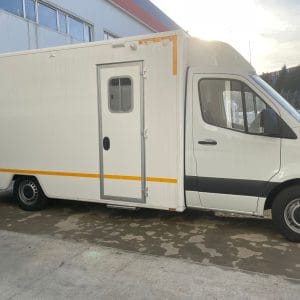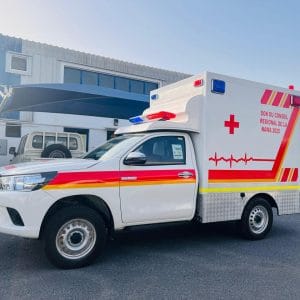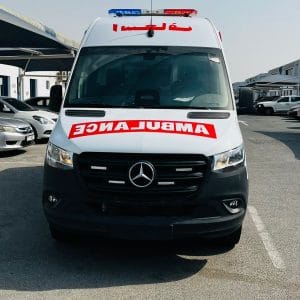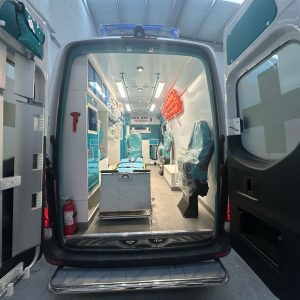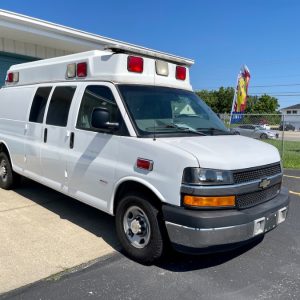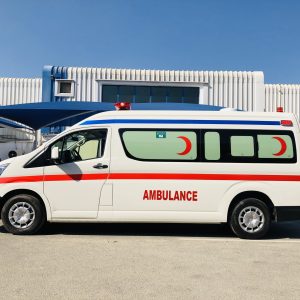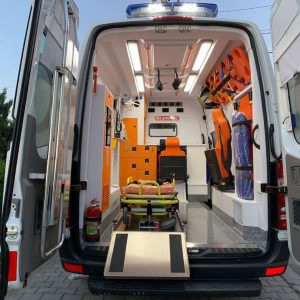Emergency Vehicle Equipment; When an emergency call comes in, the vehicle that responds is far more than just transport; it is a fully equipped mobile emergency department. The effectiveness of first responders—EMTs and paramedics—is directly tied to the technology and tools at their disposal. The right emergency vehicle equipment can mean the difference between life and death, making its selection, maintenance, and understanding paramount for any EMS fleet manager or medical professional.
This comprehensive guide breaks down the critical categories of equipment found in a modern Advanced Life Support (ALS) unit, explaining the life-saving role each piece plays in patient care.
1. Core Life Support & resuscitation equipment
This category encompasses the high-tech, non-negotiable tools used to stabilize patients in critical condition.
- Defibrillator: The cornerstone of cardiac arrest response. Modern defibrillators are often AEDs (Automated External Defibrillators) or manual monitor/defibrillators that can analyze heart rhythms and deliver a life-saving shock to restore a normal beat. Their presence on every unit is non-negotiable.
- Portable Ventilator: For patients who cannot breathe effectively on their own, a portable ventilator automatically delivers breaths. This ensures consistent oxygenation and ventilation during transport, freeing up paramedics for other critical interventions and improving patient outcomes, especially in cases of trauma, drug overdose, or stroke.
- Resuscitation Kit: A dedicated kit containing essential tools for advanced airway management and cardiac support. This typically includes:
- Laryngoscope Set: Used to visualize the vocal cords for endotracheal intubation, securing a definitive airway.
- Endotracheal tubes of various sizes
- Bag-Valve-Mask (BVM) resuscitator
- Advanced cardiac life support (ACLS) medications
- Pulse Oximeter: A simple, clip-on device that measures the oxygen saturation level in a patient’s blood (SpO2) and their heart rate. It provides immediate, non-invasive feedback on a patient’s respiratory status.
2. Advanced Patient Monitoring & Diagnostics
To treat a patient, you must first understand their condition. This equipment provides real-time diagnostic data.
- Patient Monitor: The central hub for tracking vital signs. Modern monitors display a wealth of information simultaneously, including:
- Electrocardiogram (ECG/EKG) for heart rhythm
- Non-invasive blood pressure (NIBP)
- Pulse oximetry (SpO2)
- Temperature (often via an Ear Thermometer for speed and hygiene)
- End-tidal CO2 (EtCO2) to confirm proper tube placement and ventilation effectiveness
- Blood Glucose Meter: Essential for diagnosing and managing diabetic emergencies like hypoglycemia (low blood sugar) or hyperglycemia (high blood sugar). A quick finger-prick test allows for immediate treatment with glucose or insulin.
- Littman Stethoscope: A high-quality stethoscope is a fundamental tool for assessing lung sounds, heart tones, and blood pressure, providing critical auditory clues to a patient’s condition.
3. Patient Immobilization & Extraction Tools
Safe movement is critical, especially for patients with potential spinal or orthopedic injuries.
- Spine Board (Long Backboard): A rigid board used to immobilize a patient’s entire spine during extraction from a vehicle or other confined space and initial transport.
- Cervical Collar (C-Collar): Used to immobilize and support a patient’s neck to prevent further injury to the cervical spine after trauma.
- Fracture Splint: Various types of splints (vacuum, traction, padded) are used to stabilize broken bones, reduce pain, and prevent further damage during transport.
- Vacuum Mattress: A highly versatile immobilization device. This mattress is filled with small polystyrene beads. When air is sucked out using a pump, it becomes rigid and conforms perfectly to the patient’s body shape, providing superior immobilization for spinal or pelvic injuries compared to a traditional flat board.
- Spencer Carrera Stretcher: A specific, high-quality model of a wheeled stretcher or gurney. It is the primary tool for moving patients from the scene into the ambulance and securing them for transport. Features often include adjustable height, multiple restraint points, and easy loading into the vehicle.
4. Specialized Medical Kits & Ancillary Equipment
This category includes specialized packs and supporting tools for a wide range of medical scenarios.
- EMS Bag: A multi-compartment bag that contains a vast array of supplies, including bandages, gauze, tape, IV catheters, fluids, and medications. It is the portable pharmacy and supply closet for paramedics on the move.
- Obstetric (OB) Kit: A specialized kit containing supplies for assisting in emergency childbirth, including sterile drapes, umbilical clamps, bulbs for suctioning the newborn, and blankets.
- Medical Cooler Box: A portable, insulated container used for the safe transport of temperature-sensitive medications, blood products, or organs.
5. Comfort, Safety & Operational Support
These items support patient well-being and the operational readiness of the vehicle itself.
- Heater: Crucial for preventing hypothermia in patients, especially in trauma cases where shock is a risk or in cold climates. It ensures the patient compartment remains at a therapeutic temperature.
- Emergency Blanket: Often called a “space blanket,” this lightweight, metallic sheet is used to retain a patient’s body heat and prevent hypothermia.
- Wheelchair: For non-critical patients who require assistance with mobility but do not need a stretcher.
- Vehicle Maintenance Kit: Often overlooked but critically important. This kit, containing oil, air, and fuel filters, lubricants, and gaskets, ensures the emergency vehicle itself remains reliable and ready to respond. Downtime is not an option in EMS.
- Bactericidal Circulating Irradiator: A device used to disinfect the air and surfaces inside the ambulance after transporting a patient with a contagious illness, protecting crews and subsequent patients from cross-contamination.
Conclusion: The Symphony of Save
The emergency vehicle equipment listed here does not work in isolation. It is a symphony of technology, each instrument playing a vital role in the orchestration of saving a life. From the powerful shock of a defibrillator to the simple warmth of an emergency blanket, each item is a critical link in the chain of survival.
For EMS agencies, investing in high-quality, reliable equipment and ensuring rigorous training on its use is the highest priority. It is this combination of advanced technology and human expertise that turns a vehicle on the road into a beacon of hope and a definitive source of life-saving care.
Is your fleet equipped with the latest life-saving technology? Ensure your crews have the tools they need to perform at their best. Contact us today to learn more about outfitting your units with essential, high-quality emergency vehicle equipment.


